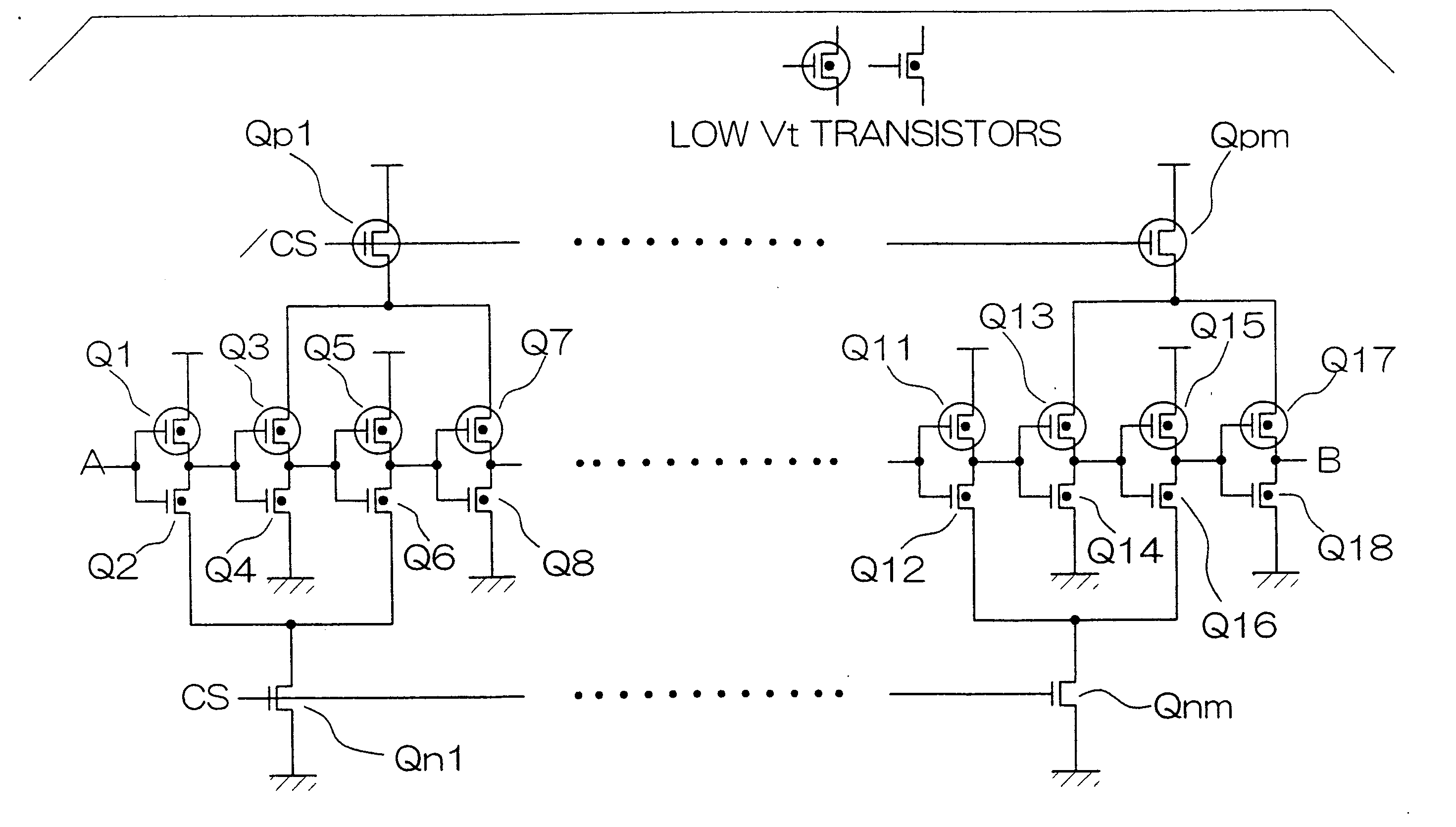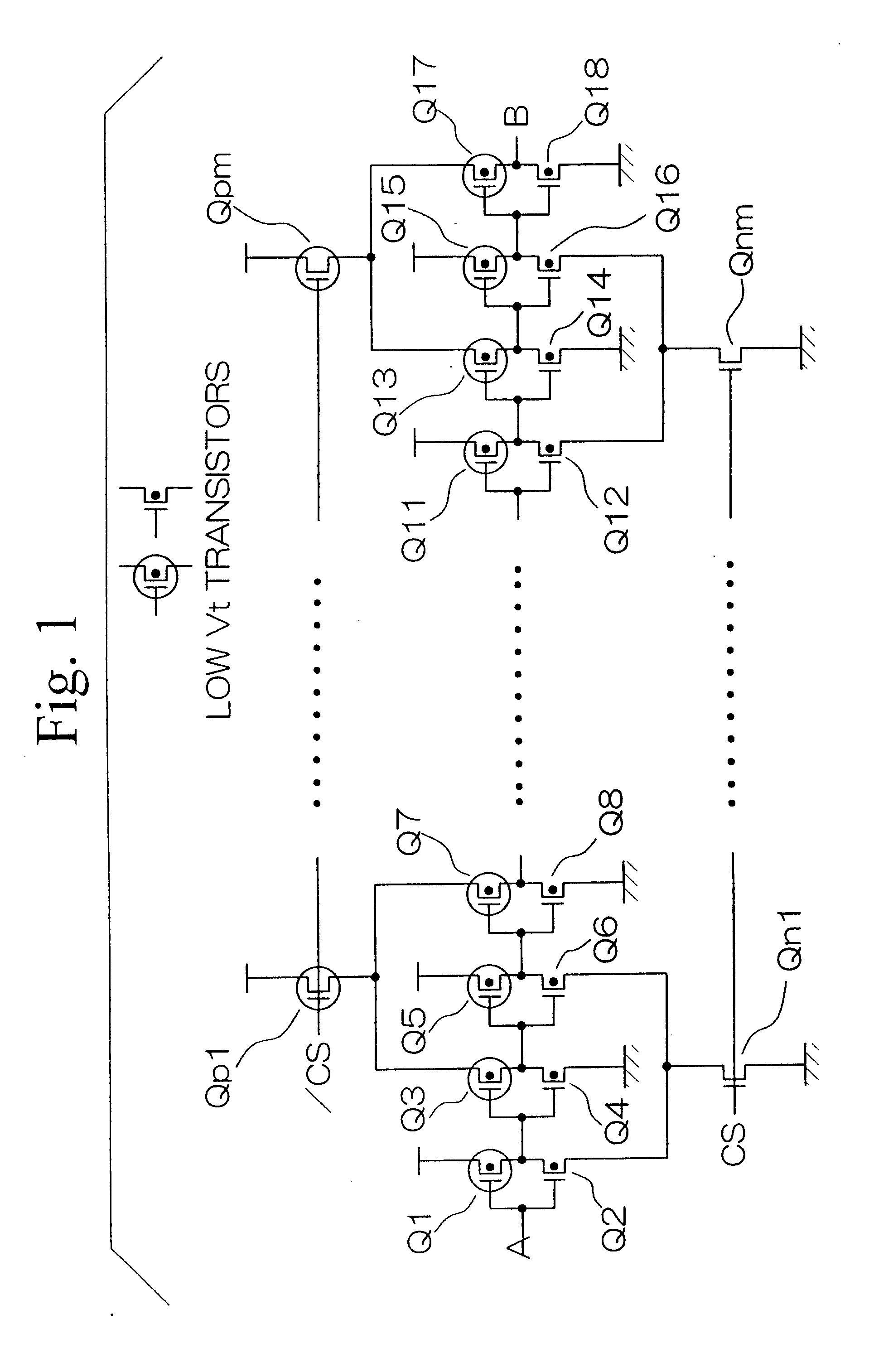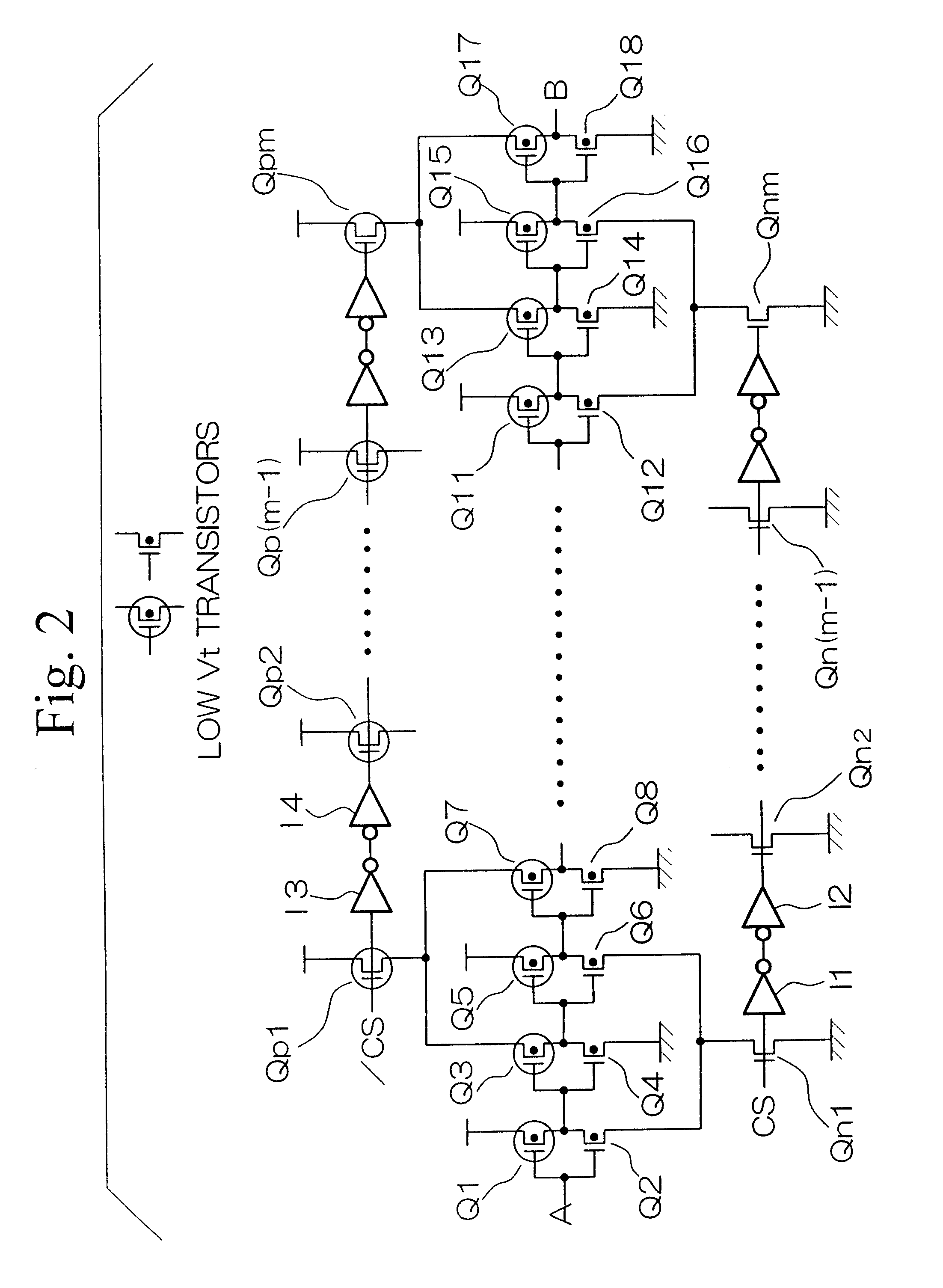Semiconductor device with power cutting transistors
a technology of power cutting transistor and semiconductor device, which is applied in the direction of power consumption reduction, pulse technique, instruments, etc., can solve the problems of insufficient transistor cut-off, inability to accept the speed of operation to decrease, and too large sub-threshold current to be ignored
- Summary
- Abstract
- Description
- Claims
- Application Information
AI Technical Summary
Problems solved by technology
Method used
Image
Examples
first embodiments
[First Embodiments]
FIG. 1 is a circuit diagram showing the structure of a semiconductor device according to the present embodiment. The circuit in FIG. 1 is a logic circuit in which multiple stages of inverters are dependently connected. TrQ1.about.TrQ8 and TrQ11 .about.TrQ18 in the figure are all low Vt transistors, and form a logic circuit extending from input node A to output node B. TrQn1.about.TrQnm and TrQp1.about.TrQpm (where m is a natural number which is 2 or greater) are all high Vt power cutting transistors which have a threshold voltage that is set to be higher than the aforementioned low Vt transistors. Note that this figure shows only the first four stages of inverters after node A and the last four stages of inverters before output node B. This embodiment considers that the electric potential of input node A when the semiconductor device is in a standby state is at "L" level.
In this embodiment, the propagation delay time per stage of inverters is 1 ns each, for exampl...
second embodiment
[Second Embodiment]
FIG. 2 is a circuit diagram showing the structure of a semiconductor device according to the present embodiment. Structural elements that are the same as those shown in FIG. 1 have been assigned the same numerical symbol. In the first embodiment, chip selecting signal CS was supplied to all of the gate terminals of power cutting transistors TrQn1.about.TrQnm, and chip selecting signal / CS was supplied to all of the gate terminals of power cutting transistors TrQp1.about.TrQpm. In other words, in the first embodiment, all of the power cutting transistors are driven by drivers (omitted from the figures) that are provided respectively to chip selecting signals CS, / CS.
In contrast, in this embodiment, respective buffers have been added in between the gate terminals of the power cutting transistors that were connected in common in the first embodiment. For example, a buffer, in which inverters I1 and I2 are dependently connected, is inserted in between the gate termina...
third embodiment
[Third Embodiment]
FIG. 3 is block diagram showing the overall structure of a semiconductor device according to the present invention, and shows an example of the design of the SRAM to which the present invention is applied. In this figure, memory cell array 1 is of the typical form in which memory cells are disposed at the points of intersection between word lines which are in rows and bit lines which are in columns. Address ADD is an access address that is supplied from outside the SRAM, and includes the row address and column address.
Address buffer 2 buffers the row address that is included in address ADD and outputs the result as row address RA. Address buffer 3 buffers the column address that is included in address ADD and outputs the result as column address CA. In addition, address buffer 2 detects transformations in the row address at each bit, and outputs this detected result as an address transformation detection signal ATDC. Similarly, address buffer 3 detects transformati...
PUM
 Login to View More
Login to View More Abstract
Description
Claims
Application Information
 Login to View More
Login to View More - R&D
- Intellectual Property
- Life Sciences
- Materials
- Tech Scout
- Unparalleled Data Quality
- Higher Quality Content
- 60% Fewer Hallucinations
Browse by: Latest US Patents, China's latest patents, Technical Efficacy Thesaurus, Application Domain, Technology Topic, Popular Technical Reports.
© 2025 PatSnap. All rights reserved.Legal|Privacy policy|Modern Slavery Act Transparency Statement|Sitemap|About US| Contact US: help@patsnap.com



